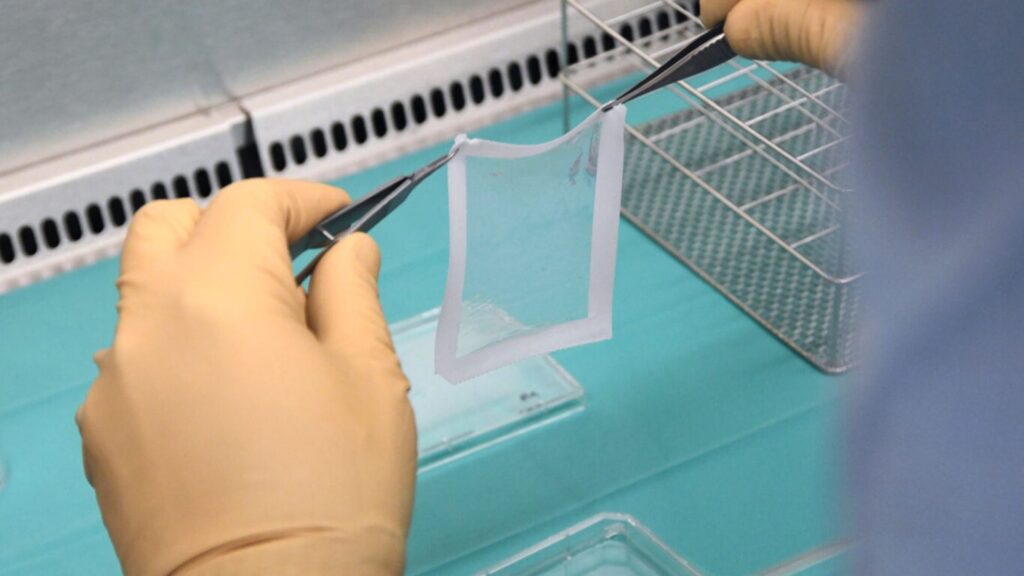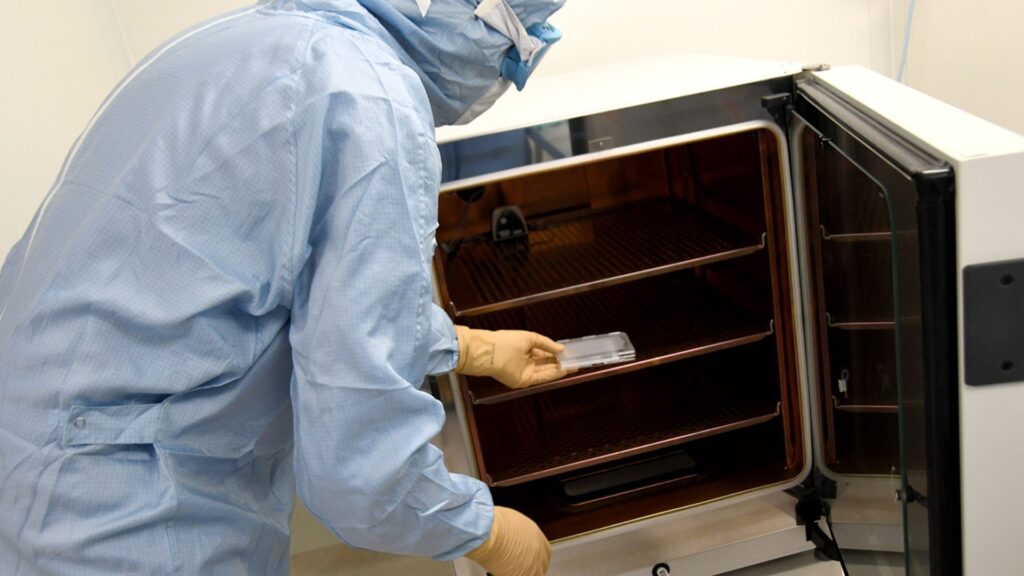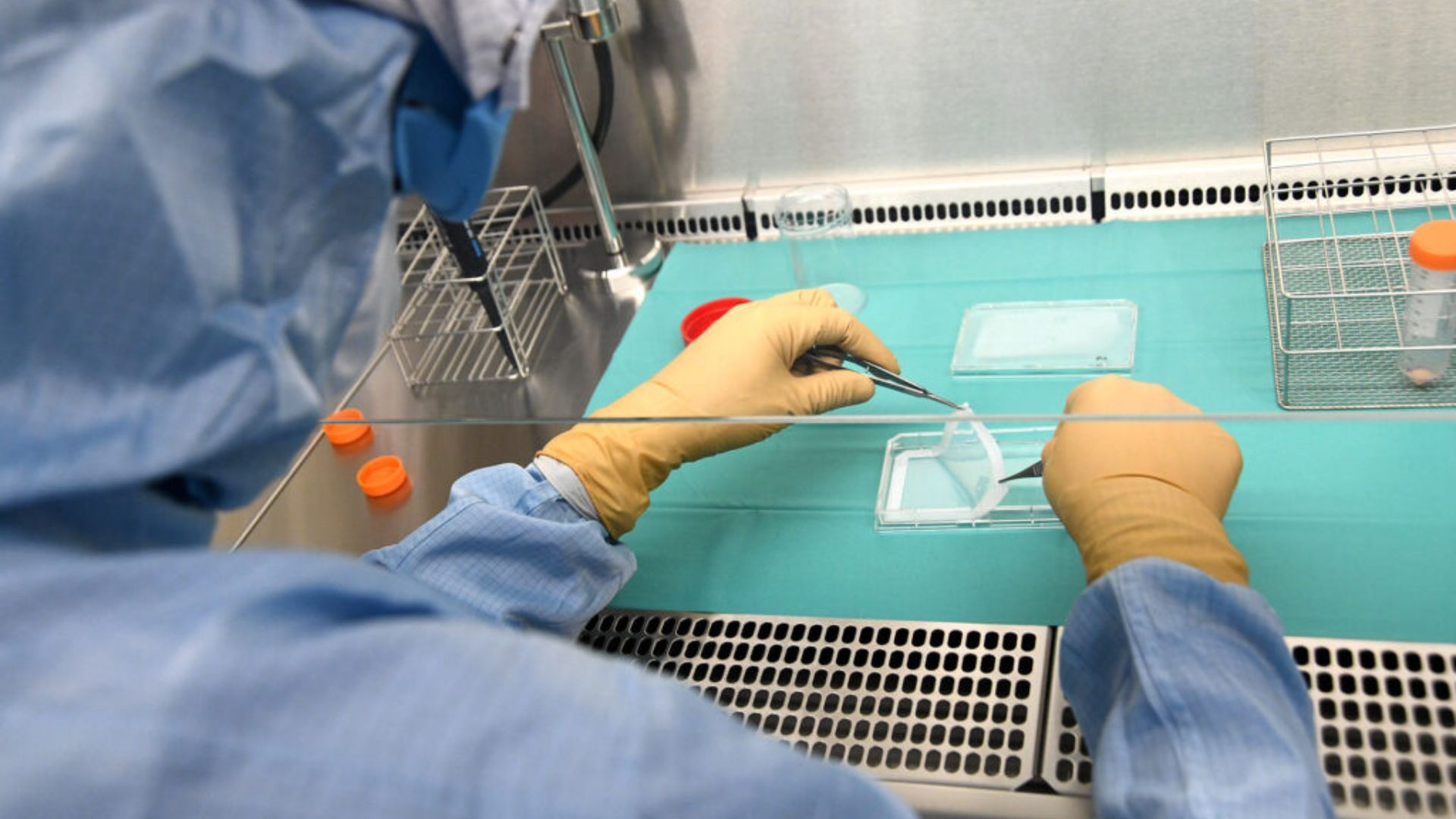For several years, a Bordeaux startup and the Marseille public hospital have been working on skin grafting using bioprinting. The first tests on patients should start soon.
In Marseille, the AP-HM and the startup Poietis (from the Greek “to make”) are studying the feasibility of grafting printed skin from a 3D printer. “ We have completed the research phase », explains Julie Véran, cell therapy unit production manager at AP-HM. “ We will now be able to move on to clinical trials. »
Advertisement
For three years, the Bordeaux biotechnology start-up and the cell therapy unit of AP-HM worked on the creation of bioprinted skin for human transplantation. The startup developed this technique in 2013, to offer an alternative to companies after theEuropean ban testing of cosmetic products on animals.
A simple fabric to work with
In 2021, the company signed a partnership with the public assistance of Marseille hospitals (AP-HM) and embarked on a completely different mission: printing skin for people waiting for a transplant.
“ Bioprinting of skin is a fairly promising strategy, recognizes a researcher at Inserm who wishes to remain anonymous. It is a simple fabric, not very thick and for which we can structure the different layers quite well. »

To date, to make a skin graft, doctors go through an autograft. That is to say, they take cellular tissue from a healthy area to graft it onto the diseased part.
Advertisement
This effective technique with a low rejection rate can, however, prove difficult, particularly for severe burn victims. Skin samples must be taken several times, as the surface to be repaired is large. Which, in addition to being long, can be painful.
Skin cells that serve as ink
Thanks to this platform NGB bioprinting, the Poietis company hopes to be able to change this practice. With their printer, it would be enough to take just two centimeters of skin, for an area of 40 cm².
“ For the moment, we have tested the feasibility of this technique using pieces of skin that had to be destroyed (biopsy, breast reduction, ear reattachment, etc.), continues Julie Véran. And the tests are quite conclusive. We will therefore move on to the transplant phase on a test group of 10 – 15 patients. »
Once this healthy skin has been removed, the cells will be isolated and then placed in culture. On one side the cells of the epidermis, on the other those of the dermis. These two “soups” will become like inks, continues Julie Véran, and the printer will be able to create new skin by printing successive layers on collagen.
“The printing phases are whole days”
Julie Veran
After ten to twenty days of maturation, it will then be possible to use this new artificial skin surface. The transplant can thus take place three weeks after the sample. “ The printing phases take whole days, it's quite long », explains Julie Véran. Each layer of skin is printed separately.
Next step: the cornea
The first human trials will be carried out on small traumatic wounds, the impression cannot, for the moment, exceed 40 cm². The grafts will also not be located on the face, hands or forearms to avoid too visible scarring in the event of difficulties.
This last phase of testing comes after tests last July (2023) on mice. Funny for a start-up that wanted to replace animal skin in clinical trials.
“On the cartilage or the cornea, it may be more complicated”
Ultimately, AP-HM and Poietis hope to be able to print cartilage, or even corneas. “ On cartilage or the cornea, it may be more complicated », nuance a researcher at Inserm on condition of anonymity. “ Cornea manufacturing could work because the tissue is thin, and similar in some ways to skin. For articular cartilage, on the other hand, a lot of teams are working on it around the world and for the moment we are not there. In the best case scenario, we could hope for the first large-scale clinical trials within 10-15 years. »


No non-white skin in bioprinting yet
Another point to note, this printed skin is currently only intended for white skin. The addition of melamine will be done in a second phase of research. People who will participate in this trial in the coming months will therefore not be able to have skin the same color as their natural skin.
“ Beyond skin color, the bioprinted graft will also have to evolve on the development of hair and glands, skin pores, etc. », continues the researcher. “ In severe burn victims, for example, the entire vascular system is also destroyed. Autograft allows the skin to be revascularized. »
The clinical trial should begin within 6 months. If the results and costs/benefit/risks are conclusive, it should be possible to consider the first transplants within 5 to 10 years. As for the cost of these transplants via 3D printers, it has not yet been communicated. Contacted on numerous occasions, the Poietis company did not respond to our requests for interviews.
More innovation in our startup space
